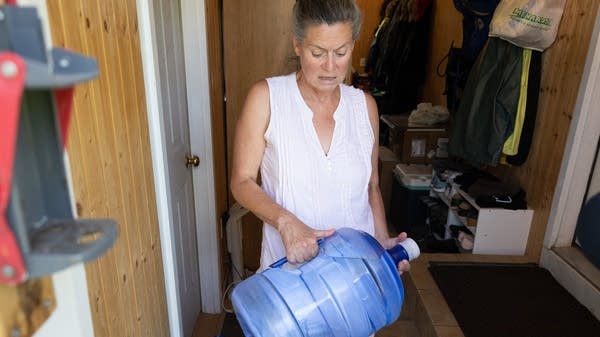On Wisconsin’s French Island, residents live with lingering ‘forever chemicals’

Town of Campbell, Wis., resident, and town board member Lee Donahue lifts a 5-gallon bottle of drinking water she and others others have been using in their homes. Donahue has been working to raise awareness of PFAS in town wells and get the state to help improve the resident's drinking water.
Ken Klotzbach for MPR News
Go Deeper.
Create an account or log in to save stories.
Like this?
Thanks for liking this story! We have added it to a list of your favorite stories.


